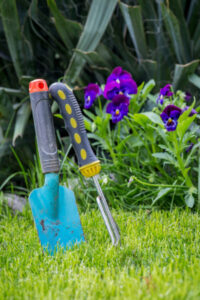*This post may contain affiliate links for which I earn commissions.*
Gardening is a delightful hobby that can fill your life with beauty, joy, and a sense of fulfillment. However, if you’re living with arthritis, you might find the physical demands of gardening a bit challenging. But don’t worry! With a few simple adjustments, you can create a garden that is not only accessible but also enjoyable. In this article, I’ll share practical tips and strategies for designing an arthritis-friendly garden, covering raised beds, ergonomic tools, and adaptive techniques for planting and caring for your plants. Let’s dig in!
Opt for Raised Beds
Why Raised Beds?
Raised beds can be a total game-changer for anyone dealing with arthritis. They minimize the need for bending and kneeling, which can strain your joints. When constructing your raised beds, consider building them at a height that’s comfortable for you. This way, you can easily access your plants without unnecessary strain on your back or knees. Plus, raised beds allow for better posture while you work, making your gardening experience much more pleasant.
Choose Joint-Friendly Tools

Invest in the Right Tools
One of the best investments I made for my gardening was switching to ergonomic and joint-friendly tools. These specially designed tools can significantly enhance your gardening experience. Look for ones with padded handles that provide a comfortable grip and reduce strain on your hands and wrists.
Long-handled Tools
Tools like rakes and hoes with long handles are fantastic because they allow you to work while standing or sitting, reducing the need to bend down excessively. This small change can make a big difference in how you feel after a gardening session.
Utilize Adaptive Techniques
Smart Techniques for Easier Gardening
Adaptive techniques can transform your gardening tasks into manageable activities. Here are a few ideas that have worked well for me:
- Use a Garden Kneeler: A garden kneeler or cushioned knee pads can provide support while working close to the ground, making it much more comfortable.
- Lightweight Garden Cart: A wheeled garden cart or trolley is a lifesaver for transporting tools, plants, and soil around your garden. This reduces the need for heavy lifting and keeps your back happy.
- Drip Irrigation Systems: Consider implementing drip irrigation systems or soaker hoses to minimize the need for repetitive hand watering. This not only saves time but also reduces strain on your joints.
Create Accessible Pathways

Designing Your Garden Layout
Creating clear and accessible pathways in your garden can enhance mobility, especially if you’re using mobility aids like walkers or wheelchairs.
- Pathway Materials: Use materials such as gravel, mulch, or paving stones to create stable and level paths that are easy to navigate.
- Wide Pathways: Ensure your pathways are wide enough to accommodate gardening carts or wheelbarrows, making it easier to move around your space.
Practice Smart Gardening Habits
Listen to Your Body
In addition to making physical adjustments in your garden, practicing smart gardening habits is crucial for joint health and minimizing discomfort. Here are some tips I’ve found helpful:
- Warm Up: Before diving into your gardening tasks, take a few minutes to warm up your body with gentle stretching exercises.
- Take Breaks: Regular breaks are essential. Use this time to rest and stretch your muscles to avoid overexertion.
- Pace Yourself: Listen to your body’s signals. If a task feels too strenuous or painful, it’s perfectly okay to pause and reassess or even ask for help.
Conclusion
Gardening with arthritis isn’t just possible—it can be a fulfilling and enjoyable activity! By incorporating accessible features like raised beds, using ergonomic tools, employing adaptive techniques, creating clear pathways, and practicing smart gardening habits, you can continue to nurture your passion for gardening. Tailor your garden to fit your specific needs and abilities, and embrace the therapeutic benefits gardening brings while prioritizing your well-being.
More Articles Related to Arthritis-Friendly Hobbies and Activities
- Arthritis-Friendly Hobbies: Exploring Creative Activities for Pain Relief
- Arthritis-Friendly Hobbies: Finding Joy and Purpose Amidst Joint Pain
- Gardening with Arthritis: Ergonomic Tools for Comfortable Cultivation
🙋♀️ Join the Conversation!
I’d love to hear your tips and stories in the comments below. Your experience could make a huge difference for someone else looking to find relief from arthritis pain while enjoying their garden. Happy gardening! 🌼

